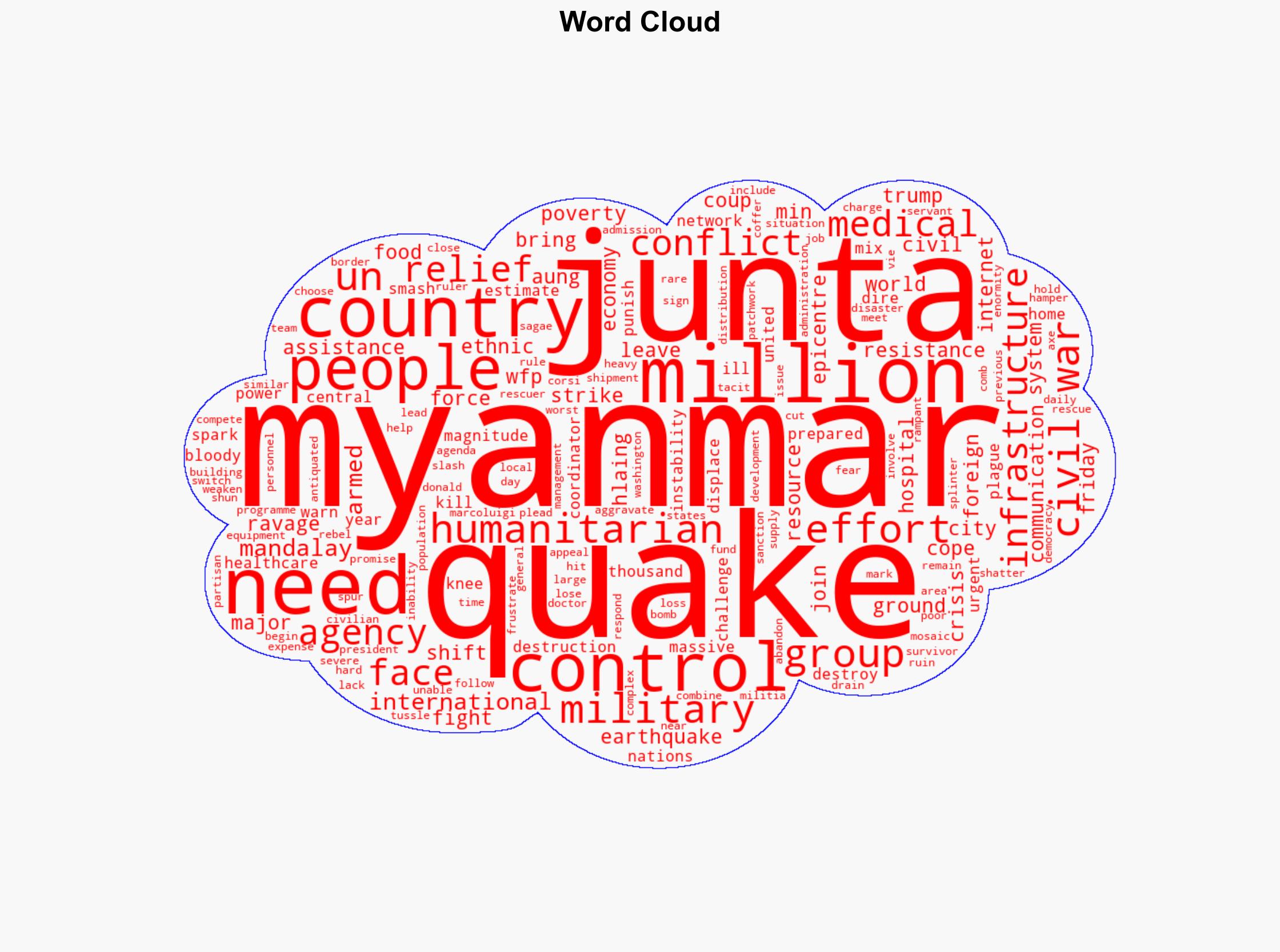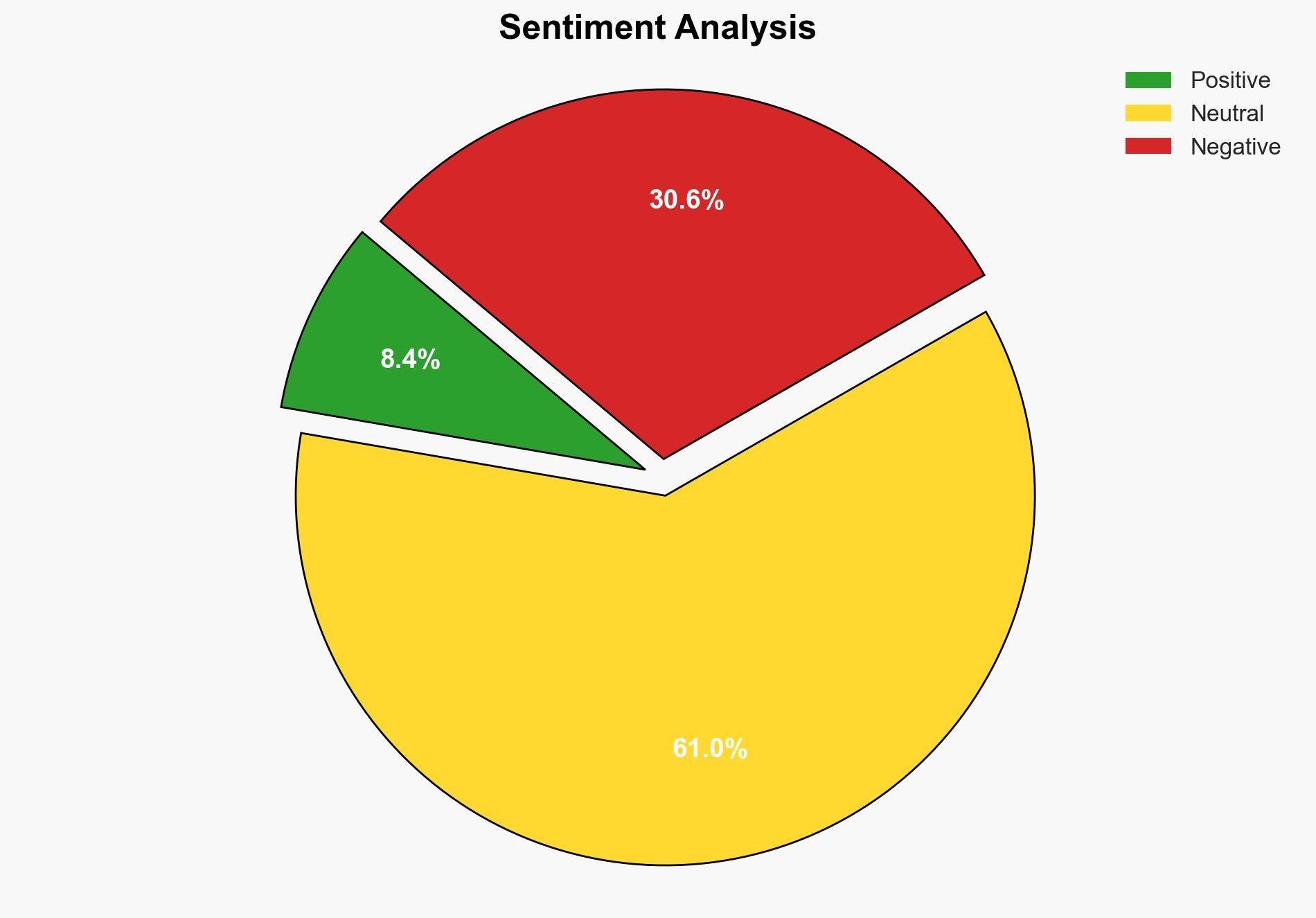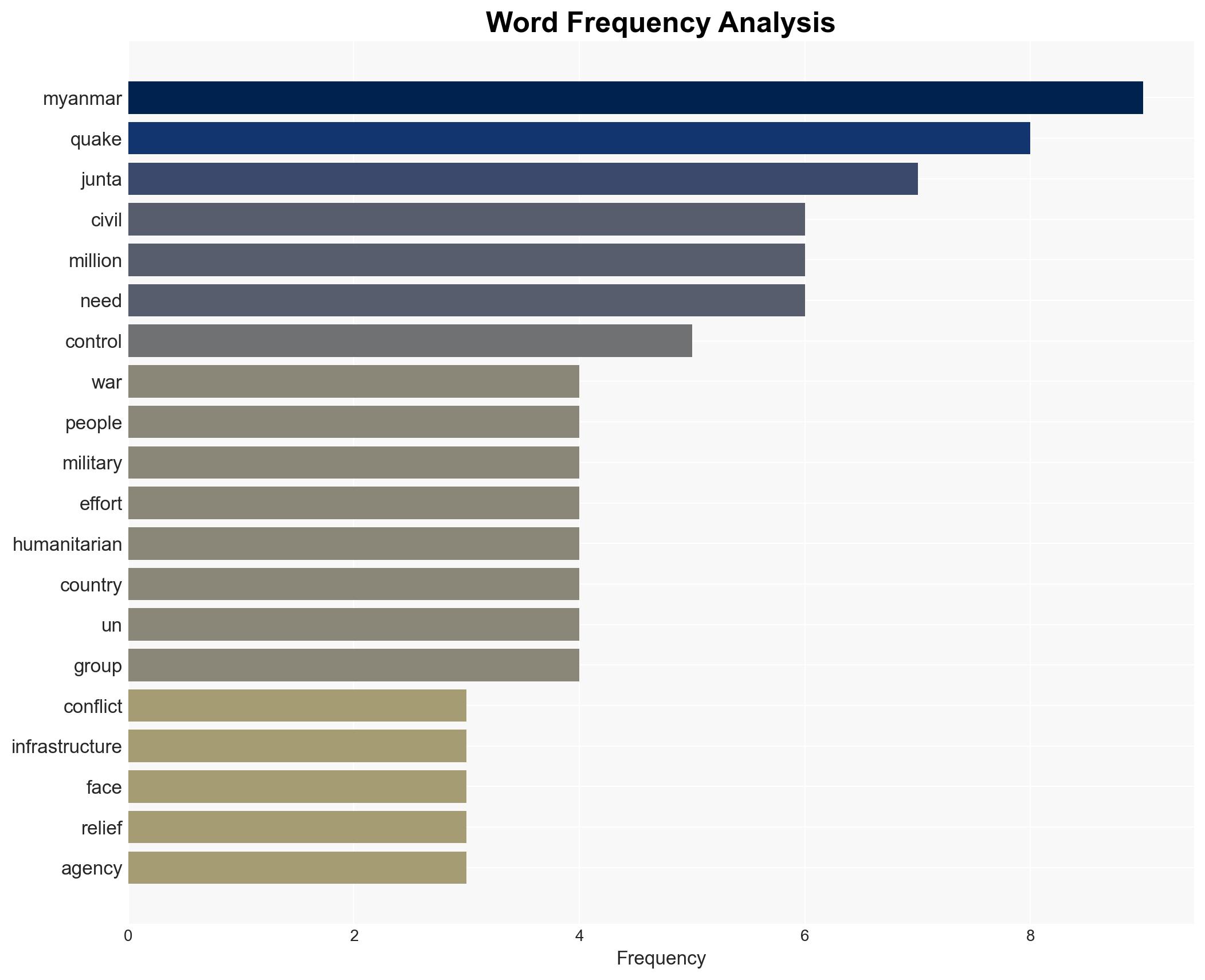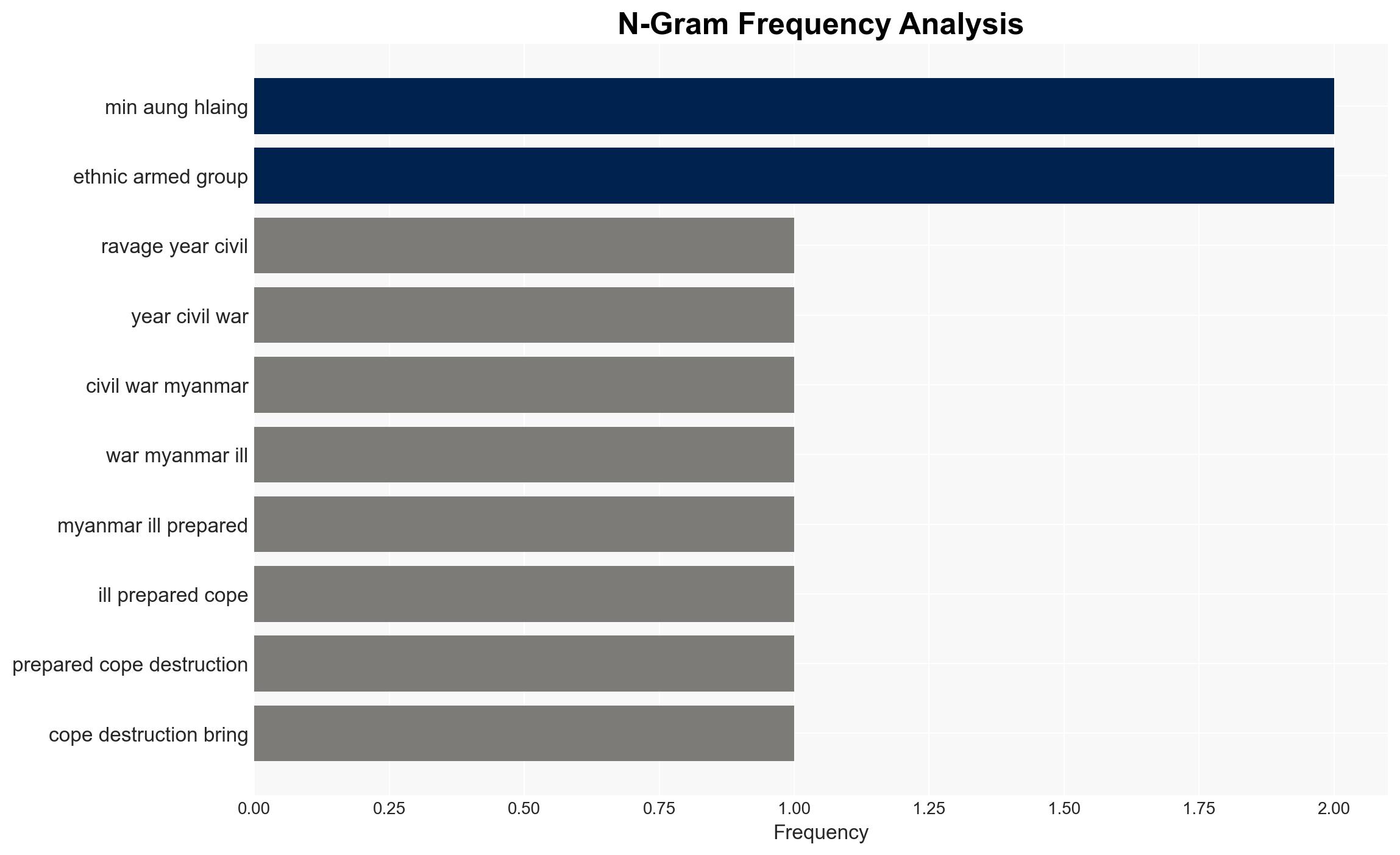Myanmar quake a nation unprepared for disaster – Digital Journal
Published on: 2025-03-30
Intelligence Report: Myanmar quake a nation unprepared for disaster – Digital Journal
1. BLUF (Bottom Line Up Front)
Myanmar is facing a compounded humanitarian crisis following a massive earthquake that struck the central region. The country, already weakened by ongoing civil war and economic instability, is ill-prepared to manage the disaster’s aftermath. Key infrastructure, including healthcare and communication networks, has been severely impacted. Immediate international assistance is crucial to mitigate the humanitarian impact, as millions are at risk of food insecurity and lack of medical care.
2. Detailed Analysis
The following structured analytic techniques have been applied for this analysis:
General Analysis
The earthquake in Myanmar has exacerbated an already dire situation caused by prolonged civil conflict and economic sanctions. The destruction of homes and infrastructure has left many without shelter and access to essential services. The military coup has further complicated relief efforts, with fragmented control over regions and a weakened civil administration. The junta’s appeal for foreign aid marks a significant shift in its previous stance of rejecting international assistance.
3. Implications and Strategic Risks
The earthquake poses significant risks to national security and regional stability. The weakened infrastructure and healthcare system could lead to a public health crisis. The ongoing conflict and lack of cohesive governance may hinder effective distribution of aid. Economically, the disaster could further strain the already shattered economy, increasing poverty levels and destabilizing the region.
4. Recommendations and Outlook
Recommendations:
- International agencies should prioritize the delivery of medical supplies and food aid to affected areas.
- Encourage diplomatic engagement to facilitate cooperation between conflicting parties for effective disaster response.
- Invest in rebuilding infrastructure with a focus on resilience against future natural disasters.
Outlook:
Best-case scenario: International aid is effectively coordinated, leading to a stabilized humanitarian situation and gradual recovery of infrastructure.
Worst-case scenario: Continued conflict and inadequate aid response exacerbate the humanitarian crisis, leading to increased displacement and instability.
Most likely outcome: A protracted recovery period with intermittent aid efforts, hindered by ongoing political and economic challenges.
5. Key Individuals and Entities
The report mentions significant individuals and organizations involved in the crisis response:
- Marcoluigi Corsi
- Donald Trump
- Min Aung Hlaing
These individuals are pivotal in shaping the response to the crisis, with varying degrees of influence on international aid and internal governance.




